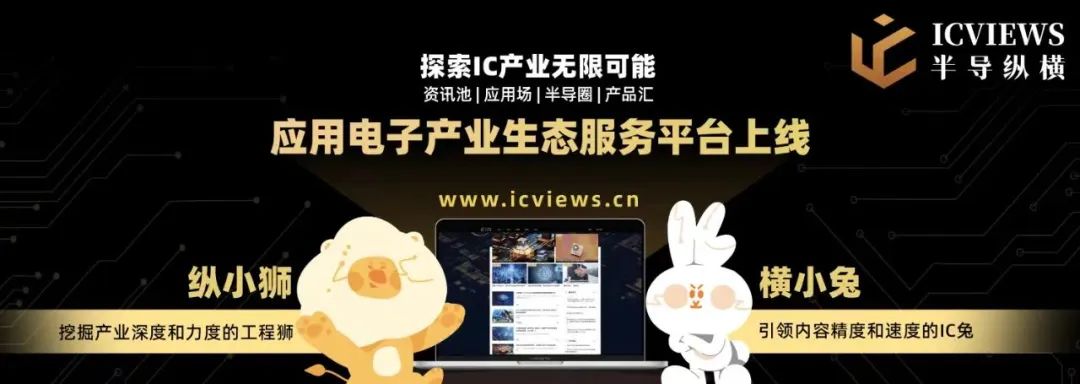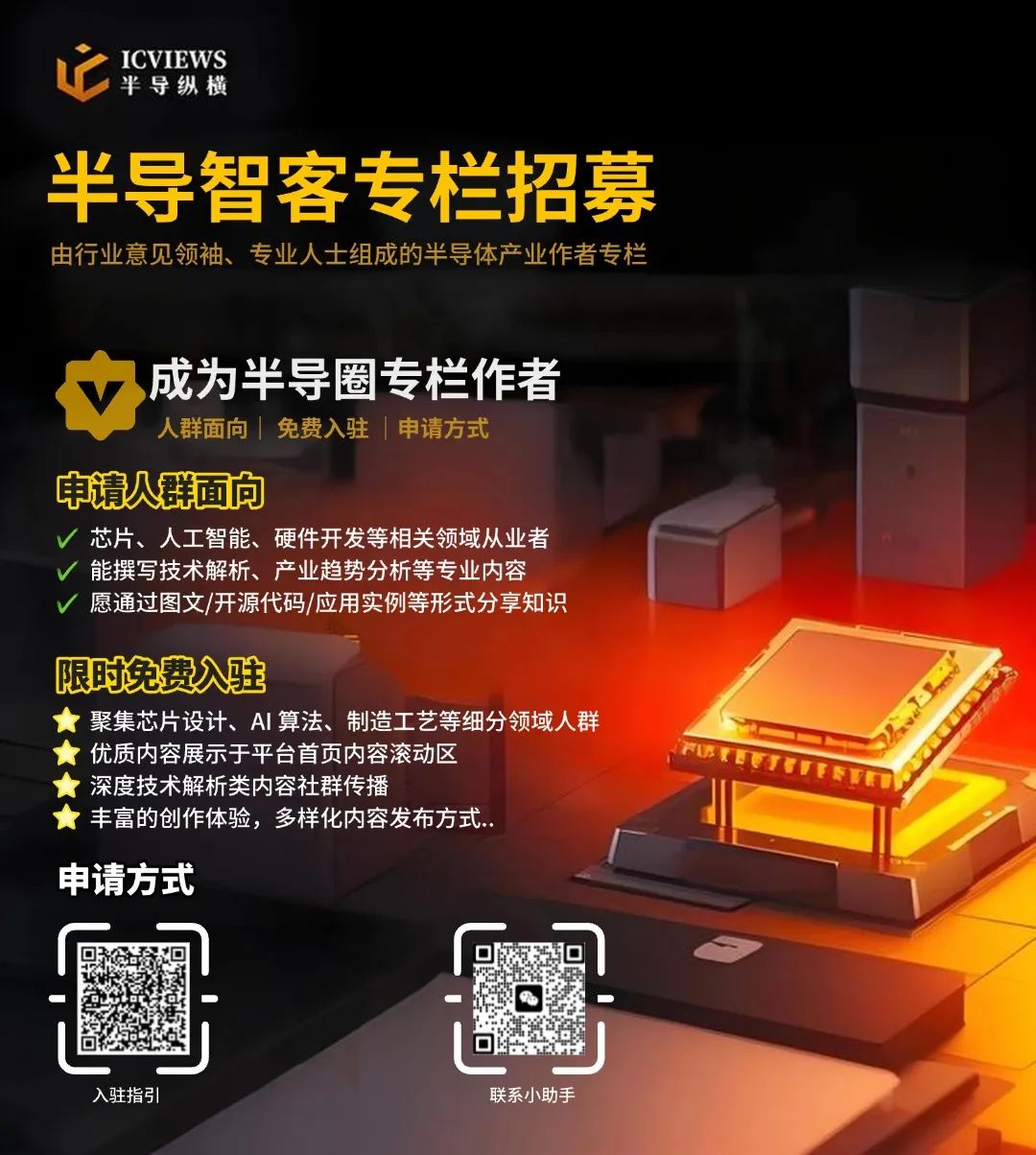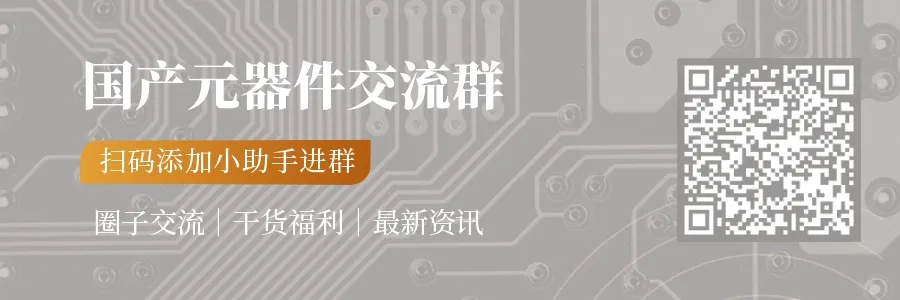

Industry Highlights
ICVIEWS+
Successful Tape-Out of Loongson 2K3000 (3B6000M) ProcessorRecently, Loongson Technology announced the successful tape-out of the Loongson 2K3000 (3B6000M) processor. The Loongson 2K3000 (3B6000M) has completed preliminary functionality and performance assessments, with all indicators meeting expectations. The Loongson 2K3000 and Loongson 3B6000M are different packaging versions based on the same silicon wafer, targeting industrial control applications and mobile terminal fields, respectively.The chip integrates 8 LA364E processor cores, achieving a measured SPEC CPU 2006 Base single-core fixed-point score of 30 points at a frequency of 2.5GHz. The chip integrates the second-generation self-developed GPGPU core LG200, which significantly improves graphics performance compared to the first-generation GPU core LG100 integrated with the Loongson 2K2000. In addition to graphics acceleration, LG200 also supports general-purpose computing acceleration and AI acceleration, with a single-precision floating-point peak performance of 256GFLOPS and an 8-bit fixed-point peak performance of 8TOPS.Currently, the OpenCL computing framework and related AI acceleration software have completed preliminary testing, and related supporting software is being improved. Dozens of industrial control and information system companies have begun to adopt this chip for product design. Intel and TSMC Reach Preliminary Agreement to Establish Chip Manufacturing Joint VentureTwo individuals involved in the negotiations stated that Intel and TSMC have reached a preliminary agreement to establish a joint venture to operate the American chip manufacturer’s factory. Reports indicate that TSMC, the world’s largest chip foundry, will hold 20% of the new company. Intel and other American investors will hold more than 50% of the shares, which means that the U.S. side will still dominate the wafer factory.It is reported that U.S. White House and Commerce Department officials have been urging TSMC and Intel to reach an agreement. In the joint venture negotiations, TSMC will obtain 20% of the joint venture company by sharing some semiconductor manufacturing technologies. However, Intel executives are concerned that this deal may lead to further layoffs (Intel has already announced a global layoff of 15% last year) and marginalize Intel’s existing process technology.Samsung Expects Q1 Operating Profit of 5.2 Trillion Won, Down 21% Year-on-Year, Chip Business Under PressureSamsung Electronics predicts a 21% year-on-year decline in operating profit for the first quarter of this year. The preliminary performance report will be released on Tuesday.Since mid-last year, Samsung’s chip business profits have continued to decline, mainly due to being surpassed by SK Hynix in providing high-performance memory for AI chip giants like NVIDIA.According to LSEG SmartEstimate, Samsung’s operating profit for the first quarter is expected to be around 5.2 trillion won, down from 6.6 trillion won in the same period last year.According to LSEG data, Samsung’s chip division is expected to achieve an operating profit of 1.7 trillion won in the first quarter, down from 1.9 trillion won in the same period last year.Currently, Samsung is accelerating the development of the next generation of advanced HBM chips to meet key customer demands. However, analysts point out that Samsung’s heavy reliance on standard memory makes its profits more susceptible to price fluctuations. In terms of foundry business, Samsung has not yet secured key orders, and analysts expect the company may delay the planned production of its new factory in the U.S. from 2026 to 2027, although the project was originally scheduled to launch in 2024.Fudan Team Develops Two-Dimensional Semiconductor Chip “Wuji”Fudan University announced that the National Key Laboratory of Integrated Chips and Systems, led by Zhou Peng and Bao Wenzhong, has successfully developed the world’s first 32-bit RISC-V architecture microprocessor based on two-dimensional semiconductor materials, named “Wuji”.This achievement breaks through the engineering bottleneck of two-dimensional semiconductor electronics, achieving an integration of 5900 transistors, which is completed by the Fudan team and has independent intellectual property rights, giving China a first-mover advantage in the development of next-generation chip materials and providing strong support for advancing electronics and computing technology into a new era.The related results were published in the journal Nature on April 2, Beijing time, under the title “A RISC-V 32-Bit Microprocessor Based on Two-dimensional Semiconductors”.
Intel and TSMC Reach Preliminary Agreement to Establish Chip Manufacturing Joint VentureTwo individuals involved in the negotiations stated that Intel and TSMC have reached a preliminary agreement to establish a joint venture to operate the American chip manufacturer’s factory. Reports indicate that TSMC, the world’s largest chip foundry, will hold 20% of the new company. Intel and other American investors will hold more than 50% of the shares, which means that the U.S. side will still dominate the wafer factory.It is reported that U.S. White House and Commerce Department officials have been urging TSMC and Intel to reach an agreement. In the joint venture negotiations, TSMC will obtain 20% of the joint venture company by sharing some semiconductor manufacturing technologies. However, Intel executives are concerned that this deal may lead to further layoffs (Intel has already announced a global layoff of 15% last year) and marginalize Intel’s existing process technology.Samsung Expects Q1 Operating Profit of 5.2 Trillion Won, Down 21% Year-on-Year, Chip Business Under PressureSamsung Electronics predicts a 21% year-on-year decline in operating profit for the first quarter of this year. The preliminary performance report will be released on Tuesday.Since mid-last year, Samsung’s chip business profits have continued to decline, mainly due to being surpassed by SK Hynix in providing high-performance memory for AI chip giants like NVIDIA.According to LSEG SmartEstimate, Samsung’s operating profit for the first quarter is expected to be around 5.2 trillion won, down from 6.6 trillion won in the same period last year.According to LSEG data, Samsung’s chip division is expected to achieve an operating profit of 1.7 trillion won in the first quarter, down from 1.9 trillion won in the same period last year.Currently, Samsung is accelerating the development of the next generation of advanced HBM chips to meet key customer demands. However, analysts point out that Samsung’s heavy reliance on standard memory makes its profits more susceptible to price fluctuations. In terms of foundry business, Samsung has not yet secured key orders, and analysts expect the company may delay the planned production of its new factory in the U.S. from 2026 to 2027, although the project was originally scheduled to launch in 2024.Fudan Team Develops Two-Dimensional Semiconductor Chip “Wuji”Fudan University announced that the National Key Laboratory of Integrated Chips and Systems, led by Zhou Peng and Bao Wenzhong, has successfully developed the world’s first 32-bit RISC-V architecture microprocessor based on two-dimensional semiconductor materials, named “Wuji”.This achievement breaks through the engineering bottleneck of two-dimensional semiconductor electronics, achieving an integration of 5900 transistors, which is completed by the Fudan team and has independent intellectual property rights, giving China a first-mover advantage in the development of next-generation chip materials and providing strong support for advancing electronics and computing technology into a new era.The related results were published in the journal Nature on April 2, Beijing time, under the title “A RISC-V 32-Bit Microprocessor Based on Two-dimensional Semiconductors”.
Company News
ICVIEWS+
Infineon Automotive Business Announces Localization Strategy in China, Involving Power Devices
Recently, Infineon’s automotive business officially released its localization strategy in China, including localized product definitions, localized production, and a localized ecosystem.
Localized products refer to Infineon defining products based on Chinese demand.
In terms of localized production, Infineon pointed out that its automotive business currently has multiple products that have completed localized mass production and plans to cover mainstream products’ localization by 2027, including microcontrollers, high and low voltage power devices, analog mixed signals, sensors, and memory devices.
Among them, the low-voltage power device 40V-100V Dual SS08 has already been mass-produced, and most products of the 40V SS08/S308 are planned for mass production by 2027; high-voltage power devices Si-IGBT and Discrete TO247 have already been mass-produced.
It is worth mentioning that to better serve the Chinese automotive market and meet the increasing demand from Chinese customers for MCUs, Infineon’s next-generation 28nm TC4x products will achieve domestic production cooperation for both front-end and back-end. The domestically produced TC4x will closely integrate local production cooperation with product customization for the Chinese market, ensuring that local products’ performance and functionality are maximized to meet the development needs of Chinese customers.
The localized ecosystem includes OEMs, Tier 1 suppliers, universities, industry associations, tool manufacturers, design houses, media think tanks, and industry organizations.
STMicroelectronicsSigns GaN Technology Development and Manufacturing Agreement with Enphase
STMicroelectronics and Enphase jointly announced that they have signed a GaN (Gallium Nitride) technology development and manufacturing agreement, leveraging each other’s strengths to enhance the competitiveness and supply chain resilience of GaN power solutions.
According to the agreement, both parties will collaborate to advance a joint development plan for GaN power technology and promote its widespread application in consumer electronics, data centers, automotive, and industrial power systems in the coming years.
The agreement also stipulates that Enphase can utilize STMicroelectronics’ front-end manufacturing capacity outside of China to produce its GaN wafers, while STMicroelectronics can also leverage Enphase’s front-end manufacturing capacity in China to produce its own GaN wafers, achieving capacity complementarity.
Siemens Announces $5.1 Billion Acquisition of Life Sciences Software Company Dotmatics
Siemens announced that it has reached a final agreement with life sciences software company Dotmatics to acquire the latter for $5.1 billion. This transaction is expected to be completed in the first half of the 2026 fiscal year, subject to customary closing conditions and applicable regulatory approvals.
Siemens stated that this acquisition will expand its AI-driven product lifecycle management (PLM) portfolio into the life sciences sector, increasing the total addressable market of its industrial software sector by $11 billion.
Siemens believes this acquisition will create strong synergies, leading to an annual revenue impact of approximately $100 million in the medium term, while the long-term effect will extend to over $500 million annually.
Siemens President and CEO Roland Busch stated, “By acquiring Dotmatics, we strategically strengthen our position in the life sciences sector and create a world-leading AI-driven PLM software portfolio as part of Siemens Xcelerator. AI has become a transformative force across industries, and its application in the life sciences sector is becoming increasingly important. The acquisition of Dotmatics is part of our ONE Tech Company growth plan, which will enhance our leadership in the industrial software sector and help our customers innovate faster.”
Equipment Dynamics
ICVIEWS+
Luvi Optoelectronics Partners with New Kai Lai to Consider Equipment Procurement
Luvi Optoelectronics stated on its interactive platform that starting in 2024, the company will collaborate with New Kai Lai, which will procure the company’s mask products. Other information cannot be disclosed due to customer confidentiality agreements. New Kai Lai has released several devices at SEMICON, and the company has begun to connect. If the performance and parameters of New Kai Lai’s equipment meet the company’s production requirements, Luvi will consider procuring New Kai Lai’s equipment.
Luvi Optoelectronics is dedicated to the research, development, production, and sales of masks, with products mainly applied in flat panel displays, semiconductors, touch screens, and circuit boards.
Previously, Luvi Optoelectronics released a performance report, achieving total operating revenue of 876 million yuan in 2024, a year-on-year increase of 30.21%; net profit attributable to shareholders of the parent company was 192 million yuan, a year-on-year increase of 29.21%; net profit attributable to the parent company after deducting non-recurring gains and losses was 174 million yuan, a year-on-year increase of 39.89%.
Regarding the reasons for revenue growth, Luvi Optoelectronics stated that the main reason was the strong downstream demand during the reporting period, and the company adhered to technology upgrades, service optimization, and capacity expansion to better meet the needs of various customers, driving steady business development and revenue growth; at the same time, the company continuously strengthened financial management, effectively reducing the expense ratio, and improving profitability.
The number of advanced lithography machines in Japan is increasing, ASML plans to expand its maintenance team in Japan to five times its current size
As Japan’s semiconductor manufacturing footprint continues to expand and the number of advanced lithography machines continues to rise, ASML plans to increase its maintenance team in Japan to five times its current size in the coming years, reaching 100 people by 2027.
At least three projects in Japan will introduce ASML’s EUV lithography equipment, including the Rapidus wafer fab in Chitose, Hokkaido (2nm logic), Micron’s memory production line in Hiroshima (1-gamma DRAM), and TSMC’s Japanese subsidiary JASM’s second-phase wafer fab (6/7nm logic).
Considering DUV machines, the scale of ASML equipment in Japan will further increase. A larger local support organization can help ASML respond to customer demands promptly, thereby reducing downtime and minimizing customer losses.
Tokyo Electron and IBM Renew Collaboration Agreement, Focusing on AI Semiconductors and Small Chips
Recently, IBM and Tokyo Electron (TEL) announced the extension of their joint research and development agreement for advanced semiconductor technology. The new five-year agreement will focus on continuously advancing the technology for the next generation of semiconductor nodes and architectures to power the generative AI era.
This agreement builds on over twenty years of joint research partnership between IBM and TEL. Previously, the two companies achieved several breakthroughs, including the development of a new laser lift-off process for producing 300mm silicon wafer chips for 3D chip stacking technology.
Now, they will combine IBM’s expertise in semiconductor process integration with TEL’s cutting-edge equipment to explore technologies for smaller nodes and small chip architectures to meet the performance and energy efficiency requirements of future generative AI.


-Recommended Reading-



